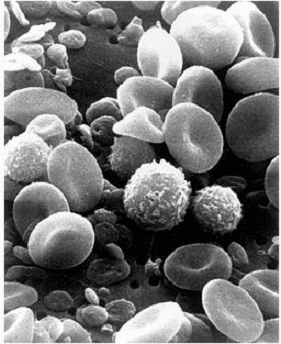University Of Bradford Devises Lymphocyte Genome Sensitivity Test To Detect Cancer
The University of Bradford researchers have come up with a simple blood test that uses ultraviolet waves to diagnose people for cancer. It will be very helpful in detecting all types of cancers and can also aid in investigating the patients having cancer cases that are difficult to diagnose. This diagnostic test named Lymphocyte Genome Sensitivity (LGS) devised by researchers may rule out traditional expensive and invasive methods such as biopsies and colonoscopies.

The test gave precise and accurate results after diagnosing the patients having cancer or pre-cancerous conditions of melanoma, lung cancer and colon cancer by using their blood samples. In LGS test, the main focus is on white blood cells (WBC) which helps to measure the damage caused to their Deoxyribonucleic acid (DNA) when exposed to ultraviolet light (UVA) of varying intensities as UVA negatively impacts the DNA. Based on the damage caused to the DNA, the researchers were able to distinguish between a healthy patient and a patient having cancer or pre-cancerous conditions. In order to conduct their study, researchers analyzed the blood samples of 208 individuals; 94 healthy volunteers were from University of Bradford and 114 individuals were the patients referred to clinics within Bradford Royal Infirmary.
The blood samples collected from the individuals were coded, anonymized, randomized and then finally exposed to the UVA light. After emitting the UVA light through five different depths of agar, the pieces of DNA were moved in an electric field. In the field, the DNA pieces were pulled towards its positive end displaying a comet-like tail. It is inferred from the results that the length of the tail is directly proportional to the damage caused to the DNA. The longer the length, the more damage is caused to the DNA. The measurements of the length of the tail correlated to those having cancer (58 individuals), pre-cancerous conditions (56 individuals) and the remaining 94 healthy volunteers.
To know more about the research you can have a look at the research paper titled #-Link-Snipped-# which was published online in FASEB Journal, the US journal of the Federation of American Societies for Experimental Biology.
Source: #-Link-Snipped-#| Image Credit: <a href="https://en.wikipedia.org/wiki/White_blood_cell" target="_blank" rel="nofollow noopener noreferrer">White Blood Cell</a>
The test gave precise and accurate results after diagnosing the patients having cancer or pre-cancerous conditions of melanoma, lung cancer and colon cancer by using their blood samples. In LGS test, the main focus is on white blood cells (WBC) which helps to measure the damage caused to their Deoxyribonucleic acid (DNA) when exposed to ultraviolet light (UVA) of varying intensities as UVA negatively impacts the DNA. Based on the damage caused to the DNA, the researchers were able to distinguish between a healthy patient and a patient having cancer or pre-cancerous conditions. In order to conduct their study, researchers analyzed the blood samples of 208 individuals; 94 healthy volunteers were from University of Bradford and 114 individuals were the patients referred to clinics within Bradford Royal Infirmary.
The blood samples collected from the individuals were coded, anonymized, randomized and then finally exposed to the UVA light. After emitting the UVA light through five different depths of agar, the pieces of DNA were moved in an electric field. In the field, the DNA pieces were pulled towards its positive end displaying a comet-like tail. It is inferred from the results that the length of the tail is directly proportional to the damage caused to the DNA. The longer the length, the more damage is caused to the DNA. The measurements of the length of the tail correlated to those having cancer (58 individuals), pre-cancerous conditions (56 individuals) and the remaining 94 healthy volunteers.
To know more about the research you can have a look at the research paper titled #-Link-Snipped-# which was published online in FASEB Journal, the US journal of the Federation of American Societies for Experimental Biology.
Source: #-Link-Snipped-#| Image Credit: <a href="https://en.wikipedia.org/wiki/White_blood_cell" target="_blank" rel="nofollow noopener noreferrer">White Blood Cell</a>
0
